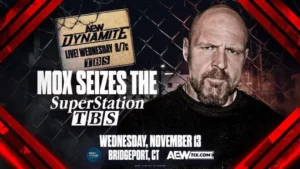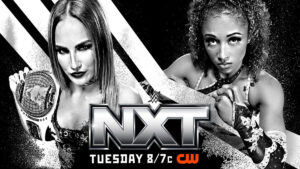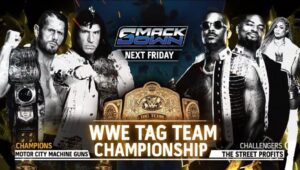A huge announcement was made on February 21, 2020, that seemed to get lost in the rise of the COVID-19 pandemic. In Japan, Japanese puroresu legend Genichiro Tenryu and others announced the creation of Japan’s first true pro wrestling Hall of Fame, Nippon Puroresu Hall of Fame (NPH). While originally slated to be opened this summer, the shutdowns will likely postpone the opening of a physical building.
【#日本プロレス殿堂会 サポーターズクラブ】
OPEN致しました!https://t.co/IDFBbKM5UE皆様から頂く会員費は、プロレスラー報酬として選手にも還元する仕組みとなっております。
そして、たくさんのオリジナルコンテンツも用意しておりますので、お楽しみ頂けると幸いです!#プロレス pic.twitter.com/ELNjhI5po8— 日本プロレス殿堂会 (@nph_2020) February 22, 2020
Tenryu will lead the administration of the NPH with his daughter-in-law, Muna Shimada, and LEONA Fujinami, the son of New Japan legend Tatsumi Fujinami. The PWH will be a neutral sanctuary of over 70-years of Japanese wrestling and announced partnerships with a whos-who of Japanese companies in New Japan Pro Wrestling (NJPW), All Japan Pro Wrestling (AJPW), Pro Wrestling NOAH, Big Japan Pro Wrestling (BJW), DDT Pro (DDT), Dragon Gate, WRESTLE-1 and Active Advance Pro Wrestling (2AW). No joshi promotions were mentioned so far, but the NPH will also be supported by Tokyo Sports and Weekly Pro-Wrestling. One of the group’s primary goals is the establishment of an economic fund, using the Hall of Fame to raise money for retired pro wrestlers in Japan, as well as current wrestlers suffering hardship due to injury or other factors.
The first five inductees were announced upon NPH’s unveiling, but a noticeable omission in the first class is Rikidōzan, the Korean wrestler who is the unquestionable Father of Puroresu. According to statements, the NPH was unable to come to an agreement with Rikidōzan’s family to include in the project, but are hopeful to include in a later class. Here’s a look at the five men who were inducted into the inaugural and 2020 Class of the Nippon Puroresu Hall of Fame.
Antonio Inoki

A student of Rikidōzan and arguably one of Japan’s biggest international stars of all-time, Antonio Inoki founded New Japan Pro Wrestling (NJPW) in 1972, after departing Rikidōzan’s Japan Pro Wrestling Alliance (JWA). Inoki would become part of pop-culture history when he fought Muhammad Ali in 1976, and was a frequent competitor with WWE in the 1970s and 1980s, both in New York City and Japan. Alongside his trainers Karl Gotch and Billy Robinson, Inoki would help create the Strong Style of Japanese wrestling, and he would retire in 1998 from in-ring competition. In 2005, he sold NJPW to Yuke’s. He was the first IWGP Heavyweight Champion.
Giant Baba

Shohei “Giant” Baba was another of Rikidōzan’s pupils who also left the JWA in 1972. While his former rival Antonio Inoki left to start NJPW, Baba left and founded All Japan Pro Wrestling. While Inoki was working with the World Wide Wrestling Federation in the US, Baba opted to work alongside the National Wrestling Alliance (NWA). Baba would become another huge international star, and the 6’10” big man would also retire in 1998. He would remain owner of AJPW until his death the following year. He became the first Japanese star to break it big in the US in 1974 when he defeated Jack Brisco to become the first Japanese wrestler to win the NWA World’s Heavyweight Championship – he would go on to win it twice more, in 1979 and 1980, both during a year-long feud with Harley Race.
Genichiro Tenryu

Originally a sumo wrestler, Genichiro Tenryu was scouted by Giant Baba and began training in 1976 with AJPW and in the US with Dory Funk Jr. He would go on to become of one All Japan’s biggest stars of the 1980s and a 3x All Japan Triple Crown Champion. In 1990, he founded Super World of Sports to compete against NJPW and AJPW but it was shortlived, and in 1992 started Wrestling And Romance (WAR, later abbreviated as Wrestle Association-R). He would also work with NJPW from 1992 to 2000, where he would win the IWGP Heavyweight Championship. He returned to All Japan from 2000 to 2004, before traveling around for much of his final years, competing for the likes of Pro Wrestling NOAH, HUSTLE, DDT Pro, and BJW before retiring in 2015.
Riki Choshu

One of Antonio Inoki’s first homegrown stars was former 1972 Olympic wrestler Riki Choshu, who began in the New Japan Dojo in 1974. He would become a 3x IWGP Heavyweight Champion and one of New Japan’s top stars of the early 1990s. In 1998, he retired to focus on being New Japan’s booker, but he returned to the ring in 2000 and continued to wrestle until his retirement in June of 2019. Riki Choshu developed the move Sasori-Gatame (Scorpion Hold), that would become the signature move for Sting in WCW as the Scorpion Deathlock and Bret “Hitman” Hart in WWF as the Sharpshooter.
Tatsumi Fujinami

A student of Antonio Inoki in the JWA in the early 1970s, Tatsumi Fujinami followed his mentor to NJPW in 1972. He would become an early star in the Junior Heavyweight category, as a 2x WWF Junior Heavyweight Champion in the late 1970s and early 1980s. In the 1980s, he moved up to Heavyweight and by end of the 90s was a 6x IWGP Heavyweight Champion. In 1991, he became the first Japanese wrestler since Giant Baba in 1980 to win the NWA World’s Heavyweight Championship, defeating Ric Flair at Starrcade 1991 held at the Tokyo Dome. Fujinami left NJPW in 2006 and continues to wrestle to this day, working with the likes of NOAH, DDT Pro, WRESTLE-1, Dradition, and HEAT-UP.
You can follow the NPH on their official website or with their Social Media on Twitter and YouTube (although as yet, there is no official English Twitter or YouTube channel). Stay tuned to the Last Word on Pro Wrestling for more on this and other stories from around the world of wrestling, as they develop. You can always count on LWOPW to be on top of the major news in the wrestling world, as well as to provide you with analysis, previews, videos, interviews, and editorials on the wrestling world.






